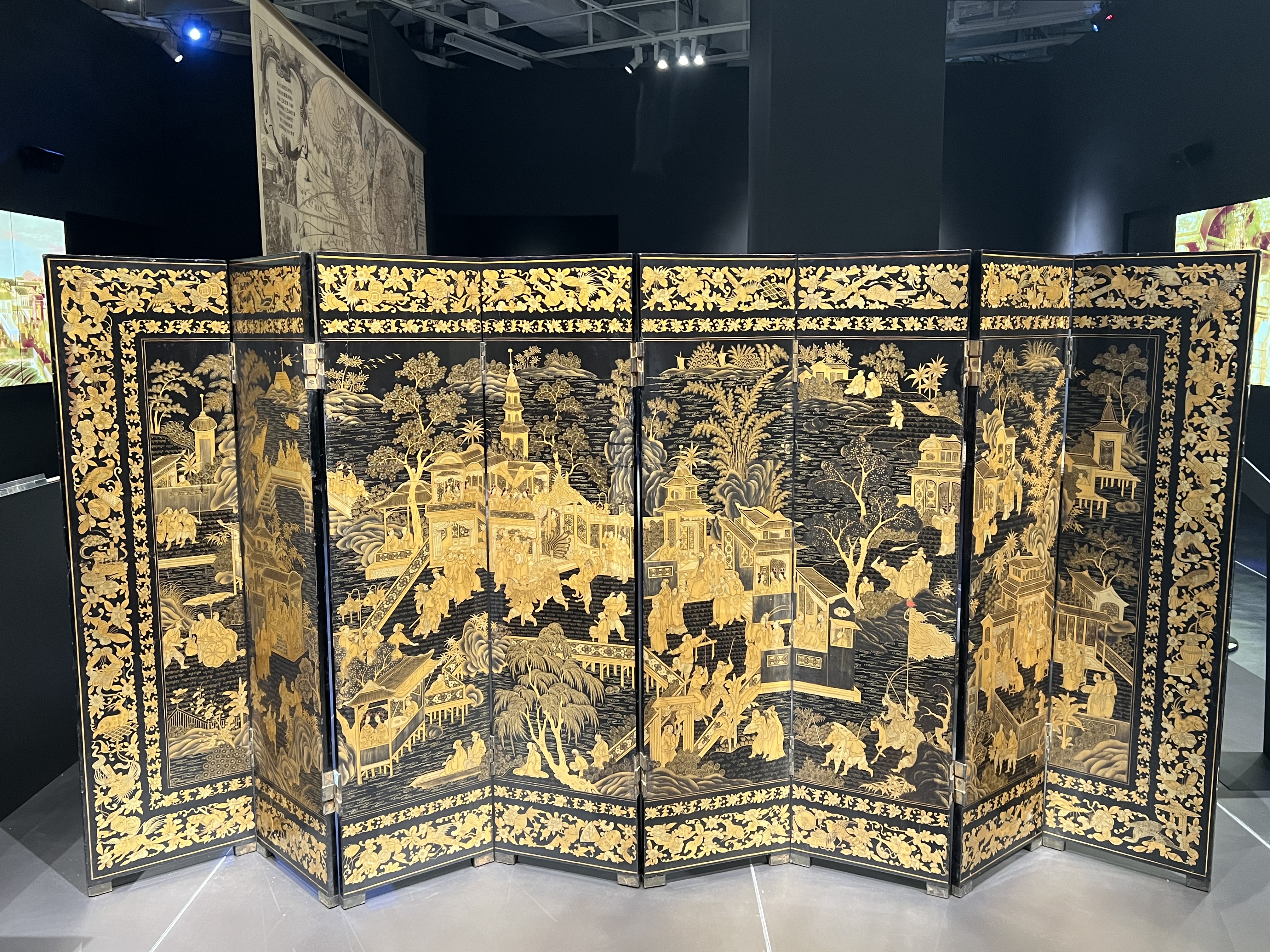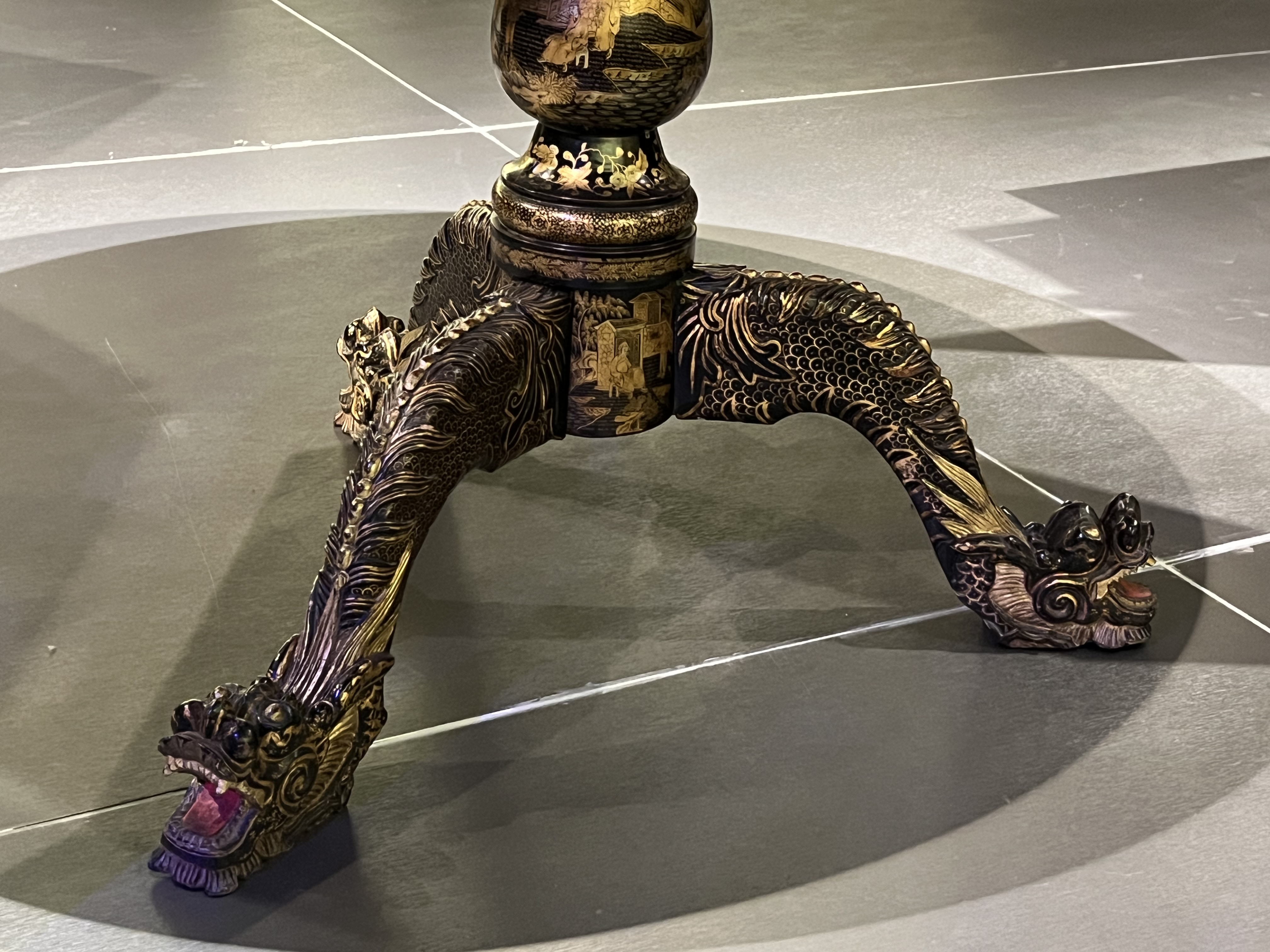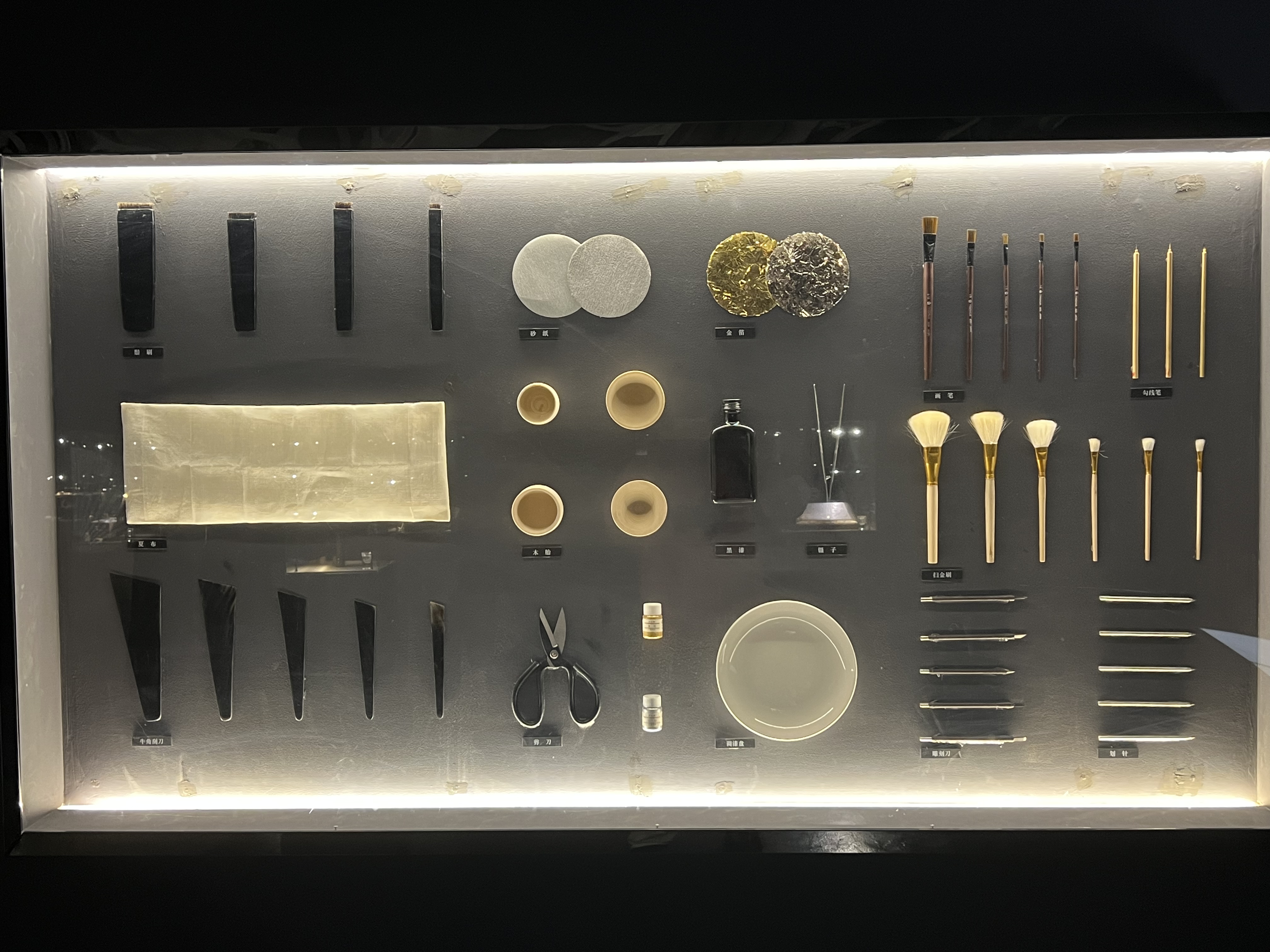An artisanship dialogue between modern China and France
Writer: Lin Songtao | Editor: Lin Songtao | From: Shenzhen Daily | Updated: 2023-06-19
Do you know that French king Louis XIV (1638-1715) once held a Chinoiserie dance party in his palace, or that Chinese Emperor Kangxi (1654-1722) played a clavichord? Besides these stories, visitors can also treat their eyes to various delicate gilt-decorated black lacquer implements shown at the “Voyage de Savoir-Faire” exhibition in Guangzhou.
Organized primarily by the K11 Craft & Guild Foundation, a Hong Kong nonprofit institution devoting to conserve and rejuvenate Chinese artisanship, the exhibition is part of the 2023 Festival Croisements series.
 A set of 19th century gilt-decorated black lacquer screens with Pan's Garden scenes. Photos by Lin Songtao
A set of 19th century gilt-decorated black lacquer screens with Pan's Garden scenes. Photos by Lin Songtao
The craftsmanship of lacquer gilt-decorating was practiced as early as the Warring States Period (476-221 B.C.) and became most prosperous during the Qing Dynasty (1644-1911). Gilt-decorating methods mainly include gilt-adhering and gilt-drawing; lacquer ware is widely used in ancient China, from architectural furnishings, palace ordinance supplies and furniture, to daily necessities and stationeries.
Qing Dynasty artisans portrayed scenery, flowers, birds and people on lacquer ware, making it exquisite. Many works crossed the ocean, arrived in European countries and became a hit among nobility at that time. Lacquer gilt-decorating set up a new aesthetic standard there.
One of the featured exhibits is a set of screens with Pan’s Garden scenes. Once known as the No. 1 garden in the Lingnan area, the garden was an important diplomatic venue, where American and French ambassadors were received.
 The legs of a late-Qing Dynasty gilt-decorated black lacquer circular tilt top table.
The legs of a late-Qing Dynasty gilt-decorated black lacquer circular tilt top table.
A chess and game box from the 19th century that is divided into upper and lower parts for storing popular Western board games is exhibited. Patterns on the box combine Chinese and Western styles. And a circular tilt top table with its three legs carved as dragon heads will certainly amaze you. The surface depicts a group of Chinese gathering at the sacrificial ceremony offering a dragonfish, a symbol of excellent academic achievements.
One shouldn’t miss the tea box decorated with garden scenes, showing the Kew Garden designed by William Chambers, a well-known British designer and landscape architect. A courtyard-scene fan will also catch your eye with its abundant Chinese elements, but with a sense of exoticism incorporated in its painting.

Tools used for gilt-decorating are also on display.
Some tools used for gilt-decorating are also on display, and through a video, you’ll learn more about the producing procedures, gaining an understanding of the craftsmanship.
Additionally, a contemporary artwork and a digital artwork featuring black lacquer gilt-decorating are at the exhibition. There are also filming spaces where visitors can immerse themselves to have more interactive experiences.
Dates: Until June 25
Tickets: 80 yuan for one person, 138 yuan for two persons
Hours: 10 a.m.-9.30 p.m. (last entry before 9 p.m.)
Venue: chi K11 art space, 4/F, K11 Art Mall, Guangzhou (广州K11购物艺术中心4楼chi K11艺术空间)
Metro: Line APM or Line 5 to Huacheng Dadao Station (花城大道站), Exit B